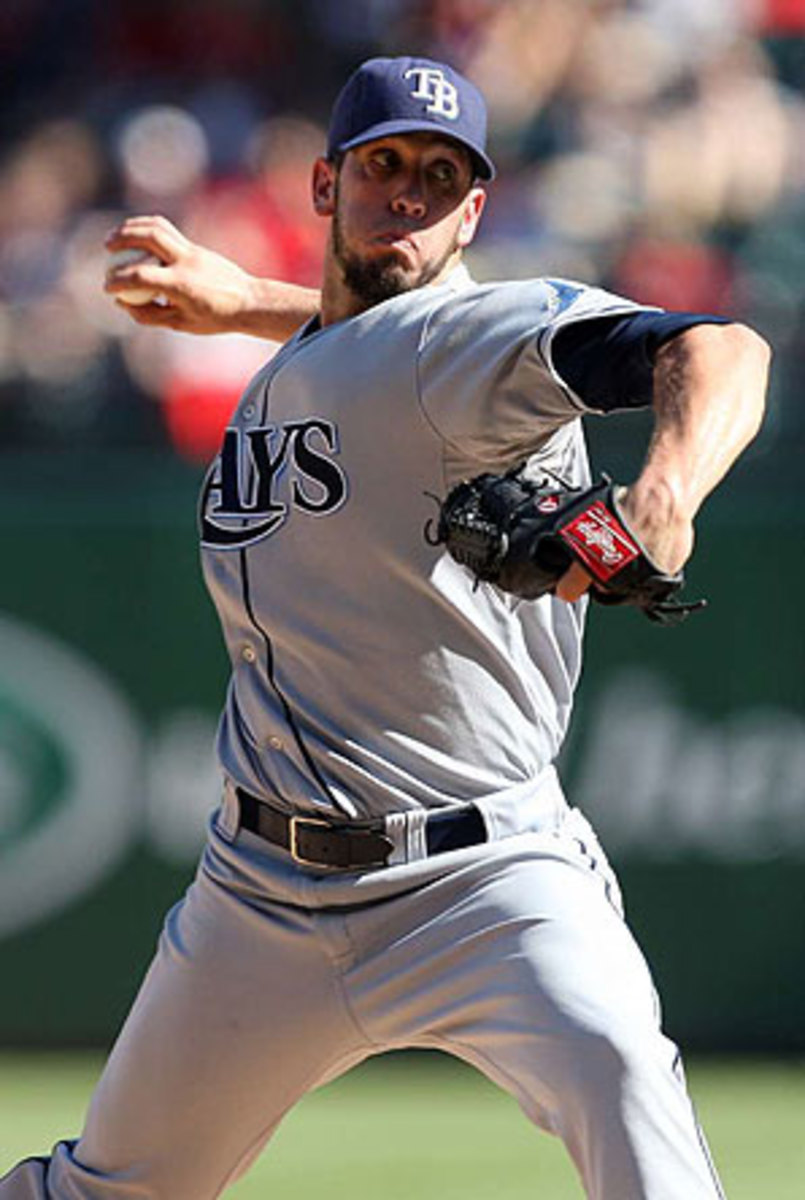Who are baseball's luckiest -- and unluckiest -- pitchers?
Three of those factors are what we might call "luck" stats, numbers that don't reflect a pitcher's particular skill, good or bad. These are events that are impacted by a pitcher's defense, or his bullpen, or just the vagaries of where a baseball lands, and while they add up to real runs on the scoreboard, they're useful for determining which pitchers are being aided or hampered by things outside of their control. The three primary measures of pitching luck are:
1. Home run-to-fly ball ratio (HR/FB). A pitcher can have a skill in generating fly balls versus ground balls, and some even have the ability to generate a lot of pop-ups. What pitchers don't have is a skill that causes those fly balls to carry over the fence. Across MLB, about one of every 10 fly balls goes for a home run, and while being above or below that average can be part of a batter's skill set, for pitchers, variation off that 10 percent line isn't something they can control.
2. Strand rate (LOB%). In the same way that clutch hitting isn't a skill, clutch pitching is not, either. Pitchers do not have a particular skill pitching with runners on base over and above pitching. A pitcher's strand rate can also be affected by the performance of the relievers when he leaves a game with runners on base. According to Ron Shandler in his Baseball Forecaster, pitchers with strand rates above 80 percent or below 65 percent are most likely to see a reversal.
3. Batting average on balls in play (BABIP). You're probably familiar with this figure, which is around .300 for the league in most seasons, give or take a few points. Pitchers can affect their personal BABIP by getting more fly balls (which go for fewer hits) and pop-ups (which almost never do) as opposed to ground balls and line drives. Beyond the mix of balls in play, however, a pitcher doesn't affect his BABIP. His defense does, though, as do the hitters. Pitchers at the extremes of batting average of balls in play tend to be lucky or unlucky, or displaying unusually high or low line-drive rates.
Now, one way to see who's been touched by fate and who's been slapped down by it is to rank all the pitchers in baseball in these areas. There are 110 pitchers who have qualified for the ERA title in their leagues, so using Fangraphs.com, I ranked all 110 by HR/FB, LOB% and BABIP, then used the total of their ordinal ranks to figure out the luckiest and unluckiest pitchers in baseball so far this season.
Let's get the first misconception out of the way: "luck" is not a derogatory term. A pitcher can be both lucky and good, as you can see above with Ubaldo Jimenez and Josh Johnson, two of the best pitchers in the NL this year by any measure. Their good fortune, however, does show up in their ERAs, which at 1.16 and 1.91 are lower than would be expected based on their strikeout, walk and batted-ball rates. Jimenez has combined a high ground ball rate with very few line drives, and both pitchers have very good strikeout-to-walk ratios.
On the other hand, you see what getting lucky can do for a mediocre pitcher. Livan Hernandez has terrible underlying performance, with just 3.76 K/9 and a 1.3 K/BB ratio. The runners he allows have been stranded at an extremely high -- and unsustainable -- rate, and he's been extremely fortunate on all the contact he allows.
Cardinals' rookie Jamie Garcia is a mixed bag with a strong ground ball rate and good strikeout rate. On the other hand, he's been wild, more so of late, and those hitters he's walking are going to start coming around soon. His HR/FB is also unsustainably low. The Cardinals, already worried about the back end of their rotation, could be in even more trouble if Garcia can't throw more strikes.
The flip side:
James Shields can blame himself for some of that BABIP, as he's allowing line drives at a career-high 23.4 percent, well above his 19 percent career mark. However, he's also among the most unfortunate pitchers in the league on fly balls. His rates most closely resemble his rookie year performance, when he posted a 4.84 ERA in 21 starts. Shields, though, hasn't pitched as badly as his ERA indicates, and with a 4.32 K/BB, should see his 4.55 figure slide back down soon.
All five of these pitchers have pitched better than their ERAs indicate, and if they can just hold on to their rotation jobs, they should allow fewer runs. That's particularly good news for the Reds, who need Aaron Harang to get back to being the No. 2 starter he was at his peak if they're going to hold off the Cardinals in the NL Central.
The important thing to take from this exercise is rethinking the concept of "luck." The word has an edge to it, as if you're denigrating a success or excusing a failure. In the world of baseball performance, though, where pitchers control some, but not all, of their world, understanding luck is critical to understanding performance.
Just looking at run prevention would give you a misleading idea of what Livan Hernandez or Craig Stammen has meant to the Nationals this season. Hernandez's 2.28 ERA is more than three runs better than Stammen's 5.43 mark, but the difference between them is entirely in these luck metrics. Stammen, looking just at batted-ball distribution, walks and strikeouts, has outpitched his veteran teammate. It's critical, whether you're in a real front office or just a fantasy one, that you accept the role of luck without getting caught up in the word itself.
Follow Joe Sheehan on Twitter and check out his blog.





